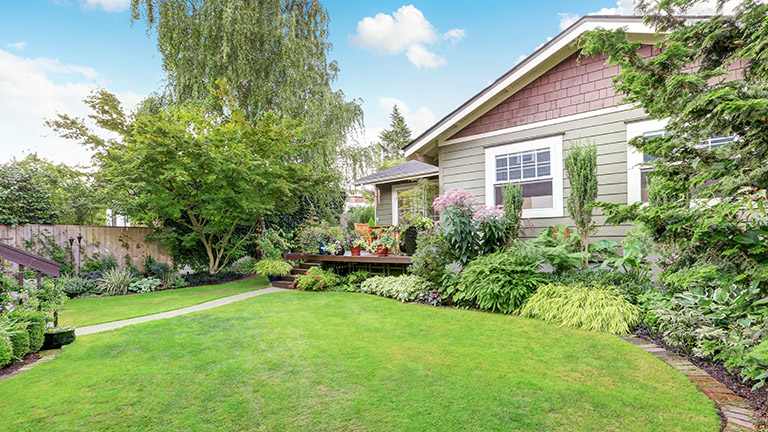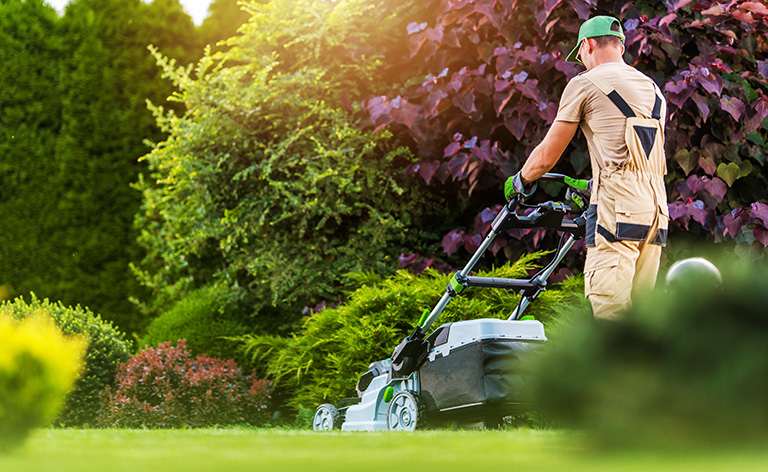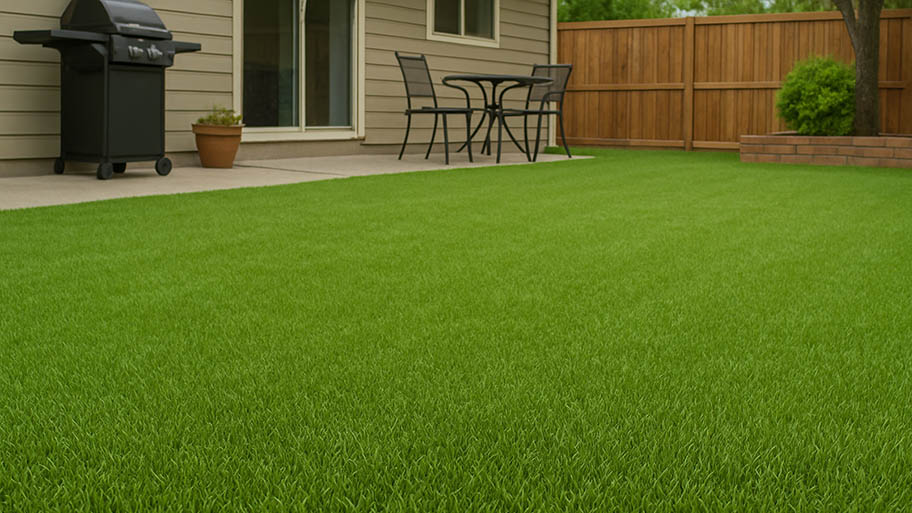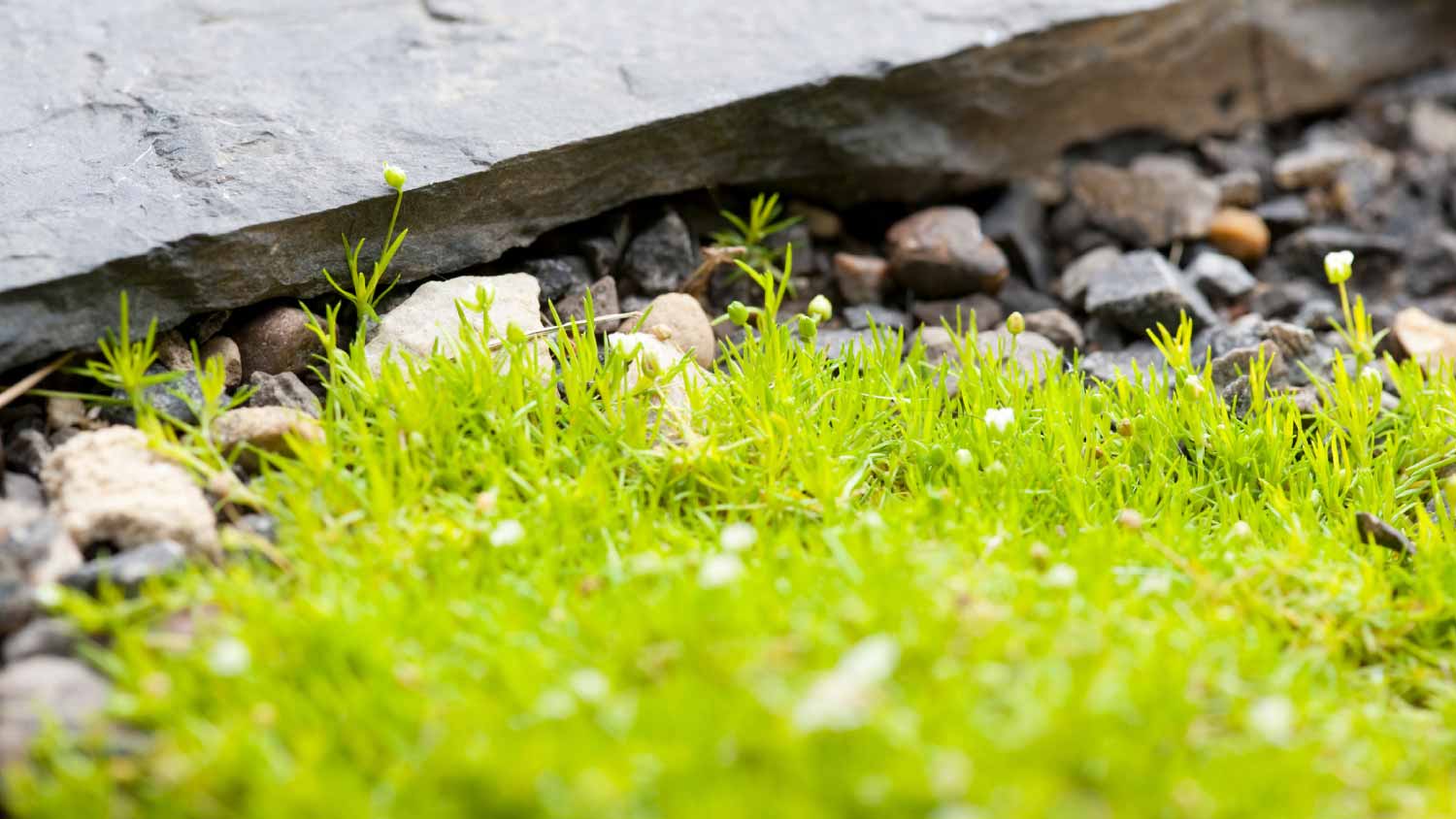
Removing an old lawn is often necessary to plant new grass or build a new outdoor structure. Find out what to budget for your lawn removal cost.
The average lawn mowing cost is $123, but runs between $49 and $203, depending on yard size.


Most companies charge based on how long it’ll take to mow, with a 1-acre lawn averaging about 3x the price of a ¼ lawn.
You can likely access discounts if you book recurring services, like every week.
Expect higher prices if your yard is oddly shaped or has many features to mow around, like swing sets or garden beds.
You can add additional lawn maintenance services, like weeding or edging, for another $35+ per visit.
The national average price for mowing lawns is $123 per visit, though it ranges between $49 and $203. A carefully maintained yard can give your home that picture-perfect look, but caring for it is no small task. Whether you choose to mow it yourself, enlist a kid from down the street, or hire lawn mowing pros near you to handle the job, your lawn maintenance will add to the curb appeal of your home and make you glad to return home each day.
Prevent lawn mower accidents by removing yard obstacles before mowing, wearing long pants and closed-toe shoes, and avoiding contact with the machine’s hot engine. Don't forget to tune up your mower by changing the filters and replacing the blade annually.
| Lawn Size | Average Time to Cut | Average Cost |
|---|---|---|
| ¼ acre | 15–30 minutes | $15–$50 |
| ½ acre | 30–45 minutes | $25–$100 |
| ¾ acre | 45 minutes–1 hour | $40–$150 |
| 1 acre | 1–2 hours | $50–$200 |
| 2 acres | 2–4 hours | $100–$400 |
| 3 acres | 3–6 hours | $150–$600 |
| 4 acres | 4–8 hours | $200–$800 |
| 5 acres | 5–10 hours | $250–$1,000 |
| 10 acres | 10–12 hours | $500–$2,000 |
| 15 acres | 15–30 hours | $750–$3,000 |
Most lawn companies charge $50 to $200 per acre or $0.01 to $0.06 per square foot to mow a lawn. It’s fairly uncommon for lawn companies to charge by square footage for mowing and other basic lawn maintenance unless you are dealing with a very small space. In most cases, the payment structure will be based on the time it takes to mow the lawn.
Calculations based on the average time it takes to mow a medium-sized lawn of two acres, which is 2 hours. Calculations rounded to the nearest whole number.
| Mowing Labor Cost | 2 hours | $50–$120 |
| Total | $50–$120 | |
| Total per Acre | $25–$60 |
A common add-on service to lawn mowing is lawn edging, which involves shaping the lawn lines around features like gardens, driveways, and patios. The average cost of lawn edging is $2.50 to $11 per linear foot. Check out the estimated cost of lawn edging:
| Lawn Size in Linear Feet | Cost Range |
|---|---|
| 12 linear feet | $24–$138 |
| 32 linear feet | $64–$368 |
| 50 linear feet | $100–$575 |
| 80 linear feet | $160–$920 |
| 100 linear feet | $200–$1,150 |
| 180 linear feet | $360–$2,070 |
In addition to size, a yard’s shape, accessibility, grass type, and more will affect the mowing price. Here are several factors that can impact your average lawn mowing cost.
Landscapers typically charge an average of $25 to $60 per hour for lawn care services or roughly $30 to $80 per lawn mowing service visit. Routine jobs such as weekly lawn mowing and watering are less expensive, but higher rates apply for speedy or complex jobs requiring multiple crew members. Many companies offer hourly rates in their quotes, but flat rates for labor, materials, and overhead are also common. These include transportation costs to your home, equipment maintenance, and maintenance of your lawn's unique features.
Every lawn is different, and the mowing schedule should be tailored accordingly. Many landscapers will offer discounts for repeat visits, or they may offer specific pricing plans to choose from.
| Lawn Mowing Frequency Plan | Cost Range |
|---|---|
| Weekly | $65–$100 per week |
| Monthly | $200–$400 per month |
| Annually | $2,000–$4,000 per yar |
The shape of your yard will affect the price you can expect to pay to have a pro trim your grass. If your yard is uniquely shaped with lots of tight corners and hard-to-reach-areas, you’ll likely pay toward the higher end of the spectrum. However, if you have a straightforward yard shape, like a simple rectangular area of grass, you’ll likely pay on the lower side (depending, of course, on your yard’s size and other factors).
If your landscaper has to maneuver around obstacles, this will likely increase your total mowing costs. Slopes, awkward shapes, gardens, playground equipment, or bodies of water that should be avoided will take longer to mow and will drive up your hourly cost.
Healthier grass grows quicker, and thicker patches of grass mean more time spent mowing. The better the health and condition of your lawn, the more you’ll likely end up paying to keep it neat and trimmed.
Lawn grass type is an important (but often overlooked) factor in lawn mowing and lawn maintenance costs. Cool-season and warm-season grasses grow at different rates throughout different periods of the year, and you may need to have certain types of lawns mowed more frequently during the growing season.

If you like to keep your grass short, this will increase the frequency of visits and thus increase your average lawn mowing cost. To keep your grass healthy, only one-third of its height should be mowed at once, so you’ll want to book more frequent visits to prevent it from getting too long in between.
For an additional cost, most local lawn care services also offer feeding, weeding, aeration, and other upgrades if you want a next-level lawn. Remember, when you hire a local lawn mowing pro, you’re also paying for their expertise.
Your geographic location is an important factor in the final cost, as it determines the type of services you’ll need to keep your lawn healthy and beautiful. For example, areas of the country that experience all four seasons will need leaf cleanup, while southern locations with a longer growing season require more frequent visits that carry on for a longer period of time. Along with that, labor costs tend to be higher in densely-populated urban areas than in more rural parts of the country.
Here’s a look at the price of lawn mowing in 10 cities:
| City | Cost |
|---|---|
| Seattle | $130–$530 |
| Minneapolis | $40–$400 |
| Los Angeles | $50–$800 |
| New York | $80–$400 |
| Houston | $30–$400 |
| Jacksonville, FL | $30–$380 |
| Cincinnati | $30–$470 |
| Phoenix | $50–$450 |
| Milwaukee | $30–$450 |
| Baltimore | $40–$700 |

Lawn maintenance tasks like edging, weed abatement, fertilization, lawn aeration, and leaf removal will also bump up your mowing cost, if you opt for those extras. Here is a look at typical maintenance tasks that your mowing pro may offer and their costs.
| Maintenance Task | Cost |
|---|---|
| Edging | $700–$1,700 |
| Weed abatement | $35–$120 |
| Fertilization | $80–$380 |
| Aeration | $70–$190 |
| Leaf removal | $190–$540 |
Prevent lawn mower accidents by removing yard obstacles before mowing, wearing long pants and closed-toe shoes, and avoiding contact with the machine’s hot engine. Don't forget to tune up your mower by changing the filters and replacing the blade annually.
DIY lawn maintenance is a relatively inexpensive task (after the initial purchase of the mower), with just the cost of gas and lawn mower tune-ups. That said, lawns benefit from consistent care, and hiring a pro means one less thing on your to-do list. Get in touch with a local lawn mowing company to learn more about the benefits of professional lawn care services.
Aside from time savings and curb appeal, hiring a professional lawn mowing service has many benefits, including the following:
Regular professional maintenance keeps your lawn evenly trimmed and healthy year-round.
Pros know the right mowing height, frequency, and techniques for your specific grass type.
Lawn care services use high-quality, well-maintained tools for a cleaner, more precise cut.
Regular mowing encourages thicker, greener grass and helps prevent weeds or disease.
Many companies offer edging, trimming, and cleanup services for a polished look.
You can count on consistent care without worrying about weather, travel, or busy schedules.
Pros carry insurance to cover property damage or injury, transferring the liability risk away from the homeowner.
They can identify issues like pests, fungal disease, and soil problems before they become serious.
Be prepared to provide yard measurements and describe the property layout to help estimate time and pricing.
Discuss how often you’d like the lawn mowed — weekly, biweekly, or seasonally.
Ask about add-on services, such as edging, trimming, leaf cleanup, or fertilization, to create a more comprehensive yard care plan.
Discuss access to the property, noting locked gates, pets, or areas that may be difficult to reach with equipment.
Inform the company of any obstacles, such as irrigation systems, decorative rocks, or uneven terrain.
Home is the most important place on earth, which is why Angi has helped more than 150 million homeowners transform their houses into homes they adore. To help homeowners with their next project, Angi provides readers with the most accurate cost data and upholds strict editorial standards. We’ve surveyed over 30,000 real Angi customers about their project costs to develop the pricing data you see, so you can make the best decisions for you and your home. We pair this data with research from reputable sources, including the U.S. Bureau of Labor Statistics, academic journals, market studies, and interviews with industry experts—all to ensure our prices reflect real-world projects.
Want to help us improve our cost data? Send us a recent project quote to [email protected]. Quotes and personal information will not be shared publicly.
From average costs to expert advice, get all the answers you need to get your job done.

Removing an old lawn is often necessary to plant new grass or build a new outdoor structure. Find out what to budget for your lawn removal cost.

The cost to reseed a lawn can vary depending on the size of your yard and the condition of the soil. We’ll help you figure out the true cost of reseeding or overseeding your lawn, along with whether or not you should hire a professional.

Artificial grass is a low-maintenance alternative to traditional turf. Learn how much artificial grass installation costs and what affects your price.

Why is moss growing in your lawn? Learn what makes moss grow and how you can get rid of it and make your lawn the envy of your neighbors.

Learn how to mow a lawn no matter the type of grass and condition. Achieve a beautifully cut lawn that looks professional using this guide.

Orchard grass control can make you feel like you're going in circles. Here are all the ways to get rid of orchard grass with or without chemicals.